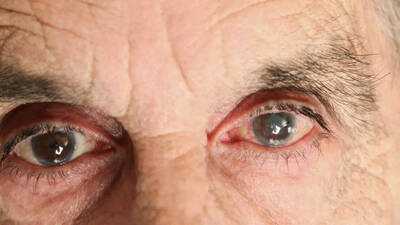
Air pollution is a major public health concern, widely known for its negative effects on respiratory and cardiovascular health. Recent research, however, highlights that airborne pollutants like particulate matter, nitrogen dioxide, and ozone can also significantly impact eye health. Exposure to polluted air can lead to dry eye syndrome , allergic conjunctivitis, cataracts, and age-related macular degeneration (AMD), affecting vision quality and comfort. Recognising early symptoms of pollution-related eye problems , such as redness, itching, watery eyes, or blurred vision, is crucial. By understanding these risks and adopting protective measures like wearing glasses, using lubricating eye drops, and monitoring air quality, you can safeguard long-term eye health.
The effects of air pollution on eyes: From dry eye to vision loss
highlights the significant impact of air pollution on eye health. The review synthesises findings from various studies over the past three decades, revealing that both outdoor pollutants like particulate matter, nitrogen oxides, and carbon dioxide, as well as indoor pollutants such as tobacco smoke and poor ventilation, are linked to several eye diseases. These include conjunctivitis, glaucoma, cataracts, and age-related macular degeneration (AMD).
1. Dry Eye Syndrome (DES)
Dry eye syndrome is one of the most common effects of air pollution. Pollutants reduce tear production and increase tear film instability, leading to redness, soreness, sensitivity to light, and a gritty sensation in the eyes. Chronic exposure can worsen symptoms, making daily activities uncomfortable and increasing the risk of infection.
2. Age-Related Macular Degeneration (AMD)
shows that residents in highly polluted areas are 8% more likely to develop AMD than those in cleaner environments. AMD occurs when the macula, the part of the eye responsible for central vision, becomes damaged. Symptoms include blurred central vision, “wavy” lines, and difficulty reading.
3. Cataracts
Air pollutants generate oxidative stress in the lens of the eye, which can accelerate the formation of cataracts. Cataracts cause cloudy or blurred vision and may eventually require surgical removal. Long-term exposure to pollutants like Carbon dioxide is linked to an increased risk of developing cataracts earlier than expected.
4. Allergic conjunctivitis and irritation
Pollution can exacerbate allergic responses in the eyes, causing redness, itching, swelling, discharge, and watery eyes. Prolonged exposure may lead to chronic irritation, discomfort, and increased susceptibility to infections. People living in urban areas with heavy traffic or industrial activity are particularly vulnerable.
5. Ocular cancer and severe effects
While rare, long-term exposure to certain air pollutants may contribute to ocular malignancies. Chronic inflammation, oxidative stress, and DNA damage caused by pollutants increase the risk of developing severe eye diseases over time.
Symptoms of pollution-related eye problems
Here are the main signs that your eyes may be affected by air pollution:
- Red, itchy, or watery eyes: Eyes may appear bloodshot, feel irritated, and water excessively, making it uncomfortable to focus on tasks. This is often the first sign of exposure to airborne pollutants.
- Sensitivity to light: Polluted air can make eyes more reactive to sunlight or artificial lighting, causing squinting, headaches, or discomfort in bright environments.
- Gritty or sandy feeling in the eyes: You may feel as though a foreign particle is in your eyes, even when there is none. This sensation is caused by tear film instability and ocular surface inflammation.
- Blurred or distorted vision: Vision may become temporarily hazy or wavy due to irritation and inflammation of the cornea, which can worsen if exposure continues.
- Persistent dryness or soreness: Pollutants reduce tear production, leading to chronic dryness, a stinging sensation, and discomfort during blinking or reading.
- Swelling of the eyelids or conjunctiva: Inflammatory responses from pollution can cause puffiness, redness, and tenderness around the eyes, making it difficult to open them fully.
If these symptoms persist or worsen, it’s important to consult an ophthalmologist for proper evaluation and management.
Who is most at risk
Certain groups are more susceptible to the effects of air pollution on eyes:
- Children, whose eyes are still developing
- Elderly individuals, who are more prone to AMD and cataracts
- People with pre-existing eye conditions, such as glaucoma or DES
- Urban residents are exposed to traffic or industrial emissions
- Individuals with high outdoor exposure, like cyclists or construction workers
Protective measures against air pollution
While it’s impossible to completely avoid air pollution, several steps can reduce its impact on your eyes:
Stay indoors during high pollution: Limit outdoor activities when air quality levels are poor.
Wear protective eyewear: Glasses or wraparound sunglasses can block dust and particulate matter.
Use lubricating eye drops: Helps maintain moisture and reduce irritation.
Improve indoor air quality: Air purifiers and keeping windows closed can reduce exposure.
Adopt a healthy lifestyle: A diet rich in antioxidants, vitamins A, C, and E, and omega-3s supports eye health.
Regular eye exams: Early detection of conditions like AMD or DES allows for timely intervention.
Disclaimer: This article is for informational purposes only and should not be considered medical advice. Please consult a healthcare professional before making any changes to your diet, medication, or lifestyle.
Also read |
-
Birthday girl Malaika Arora gets a heartfelt wish from her ex as she turns 52, actor says ‘Keep seeking..’, he is…

-
Karan Johar Lost His Virginity To Janhvi Kapoor's Relative At The Age Of 26? Read More

-
Karan Johar Lost His Virginity To Janhvi Kapoor's Relative At The Age Of 26? Read More

-
Govt proposes tighter rules for AI-content, deepfakes; moots labelling, greater onus on platforms

-
Bihar BPSC MDO Final Answer Key 2025 Released
